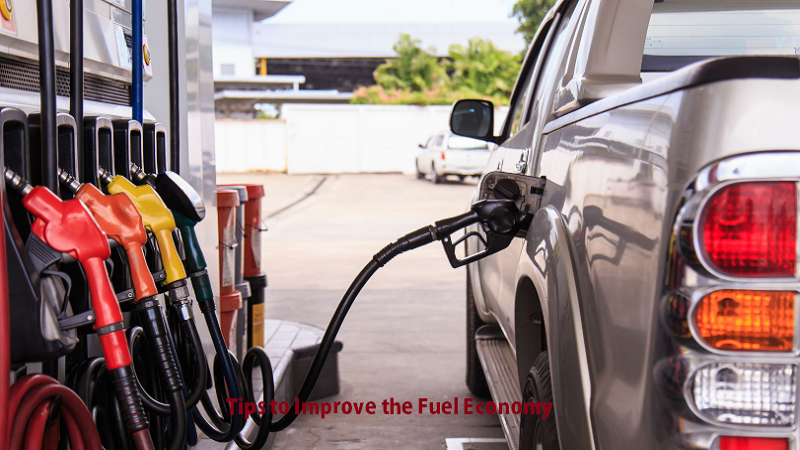
20 ways how to increase car or vehicle fuel mileage
Comments 0 January 12, 2019 Cars & Bikes, Engine Oil GuideIf you’re worried about the cost of gas or want to diminish the effect of your driving on the environment, you don’t have to scuffle your car for a hybrid or a subcompact econo-box. Fuel cost can increase up to 30% if you don’t care about the maintenance of the car or vehicle on the regular schedule. Ever body know the importance of car maintenance on the regular base but due to shortage of time we ignore or neglect below are some of fantastic tips to save fuel and how to increase fuel mileage?
- Almost every car owner want to reduce the fuel consumption of the car to save the money. So below tips will help to save every drop of fuel or oil which you pour into your tank.
- Check pressure of your cars tire at least once a month. Under-inflated tires burn more fuel. If car tires are 9 pounds below inflated, (not an uncommon condition), rolling resistance of the tires increases by 5 to 6 per cent.
- It is necessary to check the tire pressure at least once a month. Low inflated car tires surely burn more fuel. If tires pressure are under 10 pounds than rolling resistance of tires increase.
- At the petrol pump, keep the hose in the tank until after the pump shuts off and make sure you let all the fuel to pour out of the petrol nozzle. As much as a quarter of a cup can transfer from the hose. It’s yours oil, you paid cash for it.
- When suitable, use your cruise control. This can save you up to 6 to 10 per cent in fuel consumption on the road or highway.
- The Corroded battery cables reason the alternator to work harder, using extra gas. Have them washed as a matter of course with each engine check-up at workshop.
- If you keep your car engine idle more than a minutes than you are wasting oil or gas. The Latest model engine will drink less fuel turning off and restarting than idling for extended time of period. We are now being confronted with no-idle zones. Also, to efficiently warm an engine, drive it, don’t rev it. Vehicle Engines only work hard under load and will warm up much faster if you simply start the engine, wait for 30 seconds, (this builds the oil pressure,) and drive away.
- Replace the air filter on regular interval or after consulting the mechanic. You should also read the owner manual for changing the filter.
- Have a steady engine check-up. Since the arrival of computer measured fuel injection, there is no such system as an old fashioned “tune-up” any more. At nastiest, you may be expected to change the spark plugs, sensor for oxygen, fuel and air filter.
- If the car was manufacture since the mid-1980, then there are more chances the vehicles has sensor for oxygen in its system. You should change it after the recommendation of mechanic. This tiny device trims the fuel or oil delivery and has a deep effect on oil economy in the procedure.
- Driving in the peak gear likely without labouring the car engine is a fuel-efficient way of driving. Driving at 65 km/h, a car will use 20% more fuel in third gear than it would in 5th. Driving fast in low gears can consume up to 40% more fuel than is required. Watch the gauge and retain the liters per 100 kilometers as low as you can.
- Now it is time to Think ahead to save the fuel! Drive efficiently and smoothly. By smearing light throttle and avoiding hefty braking, you can decrease both oil consumption and wear and tear. Experts recommend driving practices can influence fuel efficiency by as much as 25%
- Lighten load on the vehicle. Think sensibly about what you required on a journey. If you don’t need something, do not carry it. Eliminate roof racks if not wanted, as they produce wind drag. The lighter the car load, the lesser the fuel or oil consumption and emissions.
- Select the fine octane gas for your vehicle. Check the owner’s manual guide to understand what octane your engine suitable. Octane ratings analysis gasoline’s capability to resist engine knock. Fact is that the higher the octane, the higher the cost. Only about 10 per cent of vehicle sold require premium gas. Still, best gas accounts for about 10 per cent of all the gas sold.
- Combining shopping into one tour saves you money and time. Many short trips taken from a cold start can utilize twice as much oil as a longer multipurpose tour cover the same distance when the engine is hot. Trip preparation guarantees that travelling is completed when the engine is warmed-up and well-organized.
- You can increase the gas mileage by 1 to 2% by using the maker’s suggested grade of motor oil. E.g. using 10W30 engine oil in vehicle engine designed to use 5W30 can lesser your gas mileage by 1 to 2%. Denser oil is tougher to pump. This adds to parasitic horsepower drops.
- Avoid “accelerating” the engine, particularly just before you shut the engine; this wastes oil or fuel unnecessarily and washes oil down from inside the walls of cylinder. This is actually bad doing for the next start up, as the walls of cylinder will be dry.
- Try to drive steadily. Slowing down or suddenly speeding up vehicles wastes oil or fuel. Also try to avoid the tailgating. Not only is it dangerous, but if affects your fuel economy if the other driver slows down unpredictably.
- Avoid to give rest your left foot on the vehicle brake pedal while driving a car. The least pressure puts “mechanical drag” on components, wearing them down hastily. This “dragging” also loads additional oil usage to overcome the drag.
- Avoid rough roads whenever doable, as a result of dirt or gravel will rob you of up to thirty per cent of your mileage. Anytime the wheels bounce up and down, progression energy is far from the vehicle. The most effective method I will describe this is often to expertise driving on a “washboard” road. Not solely is it terribly uncomfortable, the vehicle can really lag from the transfer of energy – and you thought physics categories would don’t have any application later in life! This causes the driving force to use additional throttle – wasted fuel.
Check the suspension and chassis portions for misalignment. Wheels shouldn’t be bent, an axles, the worn shocks, and springs broken can add to drivetrain drag, not to remark the insecure condition they create.
SUV should think switching from a violent patterned off-road tread to a fuel saving highway tread.
These are of my analysis to save the fuel and some of my replies to many questions about fuel saving. I’m definite you must have your own observation and I would like to invite everyone that reads this to add their practices on the comments tab of this story.


Leave a Reply